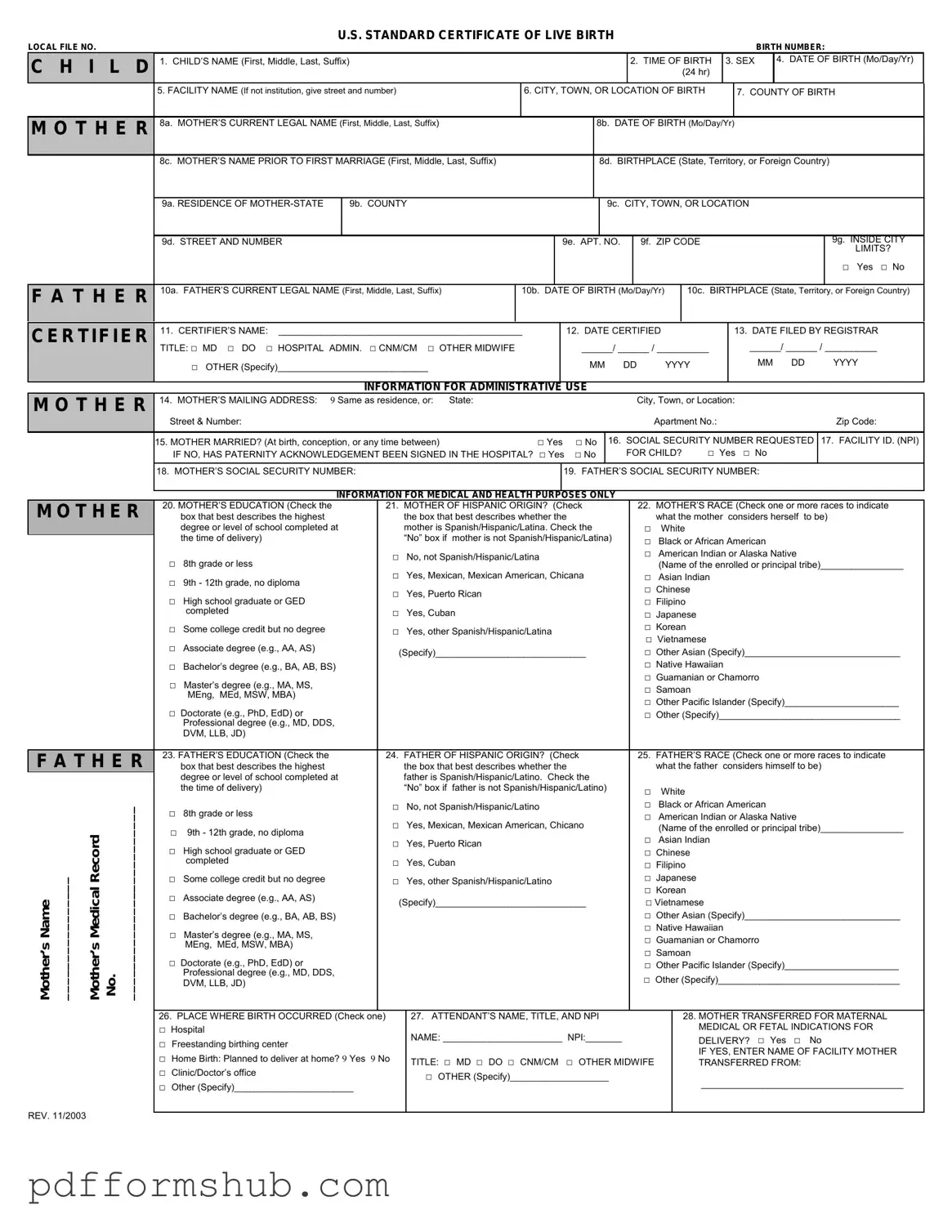Fill in Your CDC U.S. Standard Certificate of Live Birth Form
The CDC U.S. Standard Certificate of Live Birth form is an essential document that officially records the birth of a child in the United States. This form captures vital information, including the baby's name, date of birth, and parents' details, serving as a foundational legal record for identity and citizenship. Understanding how to accurately fill out this form is crucial for new parents, so take the first step by clicking the button below to get started!
Customize Form
